Baby Blue Eyes, also known as Nemophila menziesii, is a charming annual from the Boraginaceae family. Native to parts of California, particularly the Baja region, this delicate plant has also thrived in gardens across the United States. Its soft blue or white blooms not only create a stunning visual display but also play a vital role in supporting garden pollinators. Butterflies, bees, and other beneficial insects are drawn to its nectar, helping pollinate nearby flowers and vegetables.
Ideal for gardeners looking to add beauty and biodiversity to their landscape, Baby Blue Eyes is a low-maintenance choice with significant ecological benefits.
| Common name | Baby Blue-eyes, Baby-blue-eyes, Nemophila |
| Botanical name | Nemophila menziesii |
| Family | Boraginaceae |
| Species | menziesii |
| Origin | Mexico |
| Life cycle | Annual |
| Plant type | Annual |
| Sunlight | Full Sun |
| Maintenance | Medium |
| Soil condition | High Organic Matter |
| Soil ph | Acid |
| Drainage | Well-Drained |
| Growth rate | Medium |
| Spacing | Less than 12 in. |
| Flowering period | Fall |
| Flower color | Blue |
| Flower benefit | Showy |
| Garden style | Rock Garden |
| Uses | Container |
I. Appearance and Characteristics
Nemophila menziesii, known commonly as baby blue eyes or baby’s-blue-eyes, is an annual herb. The plant is native to California, Baja California, and Oregon.
It grows virtually throughout California at elevations from sea level up to almost 6,500 feet (2,000 m). It grows in many types of habitats, including chaparral, valley grasslands, and montane locales.
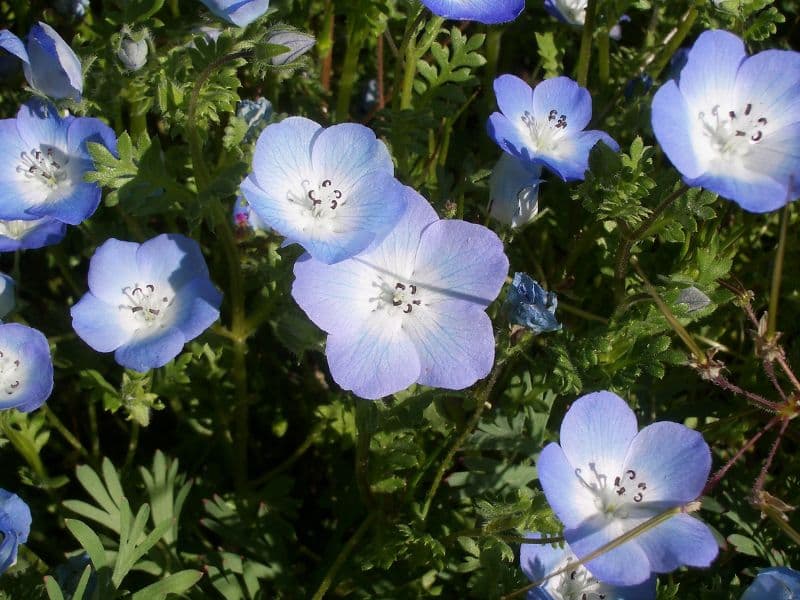
Nemophila menziesii is variable in appearance. Lower leaves are stalked, lobed and oppositely arranged, 10–50 millimetres (0.4–2.0 in) with five to thirteen lobes, each entire or with one to three teeth. Upper leaves are more or less sessile and less lobed than lower. The stalk of the inflorescence is 20–60 millimetres (0.8–2.4 in).
Calyx lobes are 4–8 millimetres (0.2–0.3 in). The flower is blue with a white center or all white, usually with blue veins and black dots near the center. It is 6–40 millimetres (0.2–1.6 in) wide. The tube is less than or equal to the filaments.
Varieties
The species includes three varieties:
- Nemophila menziesii var. atomaria has white flowers with black dots, often with a faint blue tint or blue veins in the corolla. It is found on coastal bluffs or grassy slopes in Oregon, Northwestern California, the Central Coast of California, and the San Francisco Bay Area.
- Nemophila menziesii var. integrifolia has blue flowers, with black dots at the center and deep blue veins. It is found in grasslands, canyons, woodlands, and slopes in the Central Coast, southern Coast Ranges, southwestern California, east of the Sierra Nevada range, and into the Mojave Desert and Baja California
- Nemophila menziesii var. menziesii has bright blue flowers with white centers that are generally dotted with black. It is found virtually throughout California, in meadows, grasslands, chaparral, woodlands, slopes, and desert washes, but it does not occur above 5,200 feet (1,600 meters).
II. How to Grow and Care
Sunlight
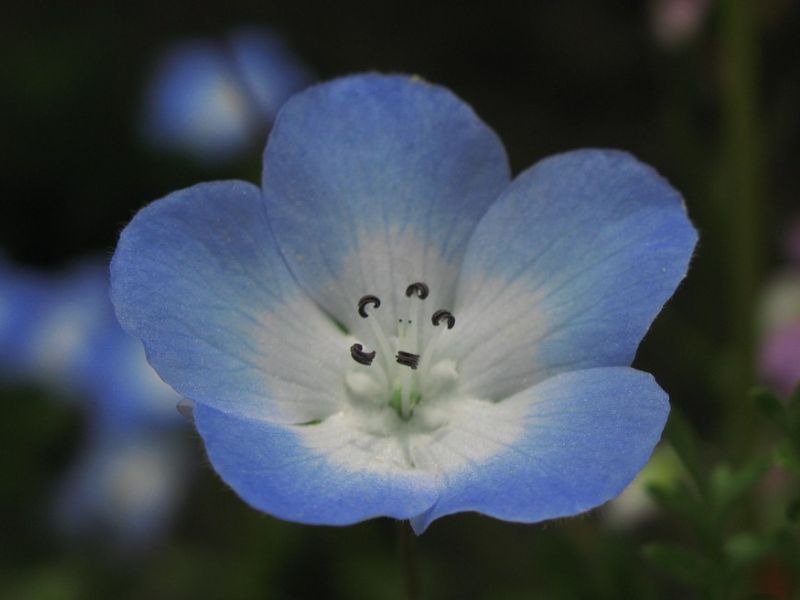
Plant baby blue eyes in full sun to part shade. In climates with hot summers, afternoon shade is recommended.
Temperature and Humidity
Baby blue eyes is a cool-season annual; its prime time is in the spring or in cool summer climates where nighttime temperatures consistently dip below 65 degrees F.
Dieback over the summer is natural but hot, humid weather early in the season precipitates its decline.
Watering
Thriving in its native moist habitats, baby Blue Eyes has adapted to prefer consistent moisture levels, reflecting the conditions of its origin. It exhibits a moderate tolerance for drought but flourishes with regular hydration. To maintain its delicate balance, it requires watering every week. As an annual herb commonly grown outdoors, baby Blue Eyes’s growth cycle is heavily influenced by water availability, making efficient irrigation practices during its growing season essential for optimal bloom and foliage health.
Soil
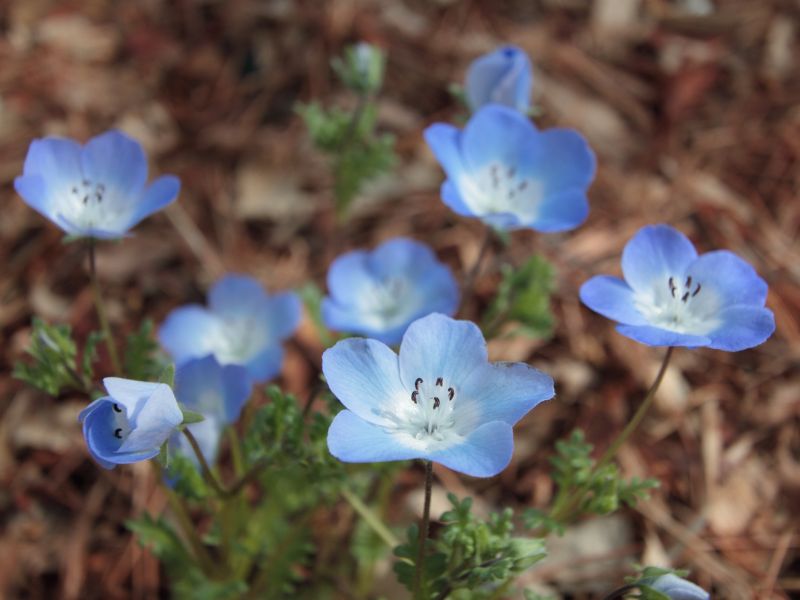
The soil should be loose, organically rich, and well-drained, with an ideal pH around 6.0 or slightly below.
Fertilizing
For optimal growth, baby Blue Eyes benefits from fertilization with high phosphorus content to encourage robust flowering. Apply a diluted solution every 4-6 weeks during the growing season, using about ½ teaspoon per gallon of water. Over-fertilization can lead to foliage at the expense of blooms; hence, moderation is key. Seasonal changes call for reduced quantities in autumn. Practical tip: water baby Blue Eyes before fertilizing to prevent root burn and ensure even nutrient distribution.
Planting Instructions
Select a location in full sun or, in hot climates, in partial afternoon shade where the soil is well-draining and acidic.
Baby blue eyes does not transplant well but growing them from seed is a cinch. In climates with cold winters, start seeds indoors in biodegradable pots (peat or coir) 6 to 8 weeks before last spring frost date for bloom from spring until the heat of summer. In hot climates with mild winters (USDA Zone 8-10), sow seed directly in the garden in late summer and late fall for winter to spring bloom. Cover the seeds only lightly, they need light to germinate. Keep them evenly moist until they germinate, which takes 10 to 20 days at a soil temperature of around 55 degrees F. Once the seedlings have developed two sets of true leaves, thin outdoor seedlings to 6 to 8 inches apart.
Provide indoor seedlings with lots of light, either by placing them in a sunny window or under grow lights. Thin the seedlings and only leave the two strongest seedlings per pot. Transplant them outdoors after the last spring frost. Space plants 10 to 12 inches apart.
Pruning
There is no need to prune the plants. To prevent baby blue eyes from self-seeding (in the same season in warm climates or the following spring in cool climates), remove the seed heads and discard them. Or, to save the seeds, cut the seed heads off and dry them in a paper bag to plant the following spring.
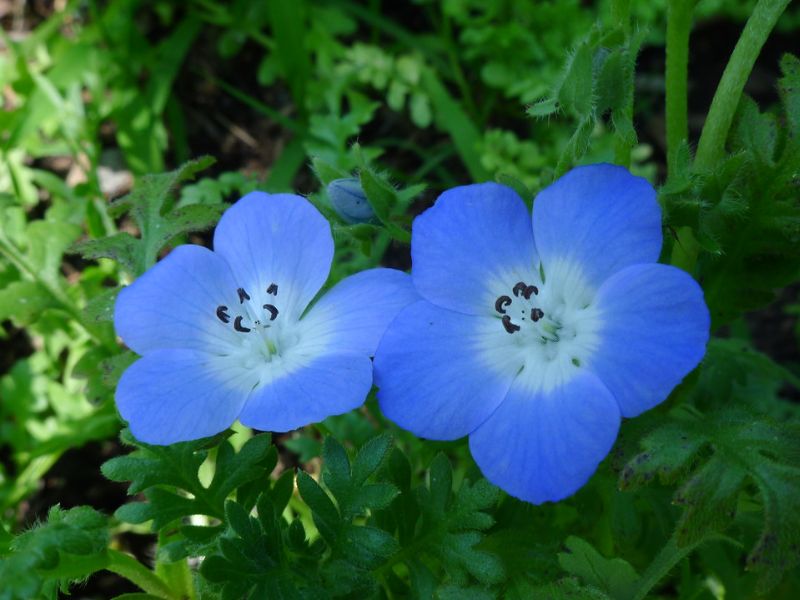
Potting and Repotting
With its low-growing, trailing growth habit, baby blue eyes is a good annual for containers. Just make sure the container has large drainage holes and fill it with a well-draining potting mix.
It needs regular watering, much more frequently than plants in a garden bed. Hanging baskets dry out even faster than standard pots; daily watering in the summer is not unusual.
Repotting is not necessary as the plant concludes its life cycle in the summer.
Pests and Diseases
Baby blue eyes has no serious insect or disease issues. It may attract aphids and it is prone to getting powdery and downy mildew.
In hot summer weather, especially in high humidity, the plants deteriorate quickly, which is part of the natural life cycle of this annual.
III. Uses and Benefits
For a stunning carpet effect. plant baby blue eyes in drifts or as mass plantings. In addition to wildflower or rock gardens, you can also use it as an edging plant anywhere. Scatter the seeds between clumps of spring-flowering bulbs or early-spring perennials such as bleeding heart, creeping phlox, lungwort, or heartleaf brunnera.
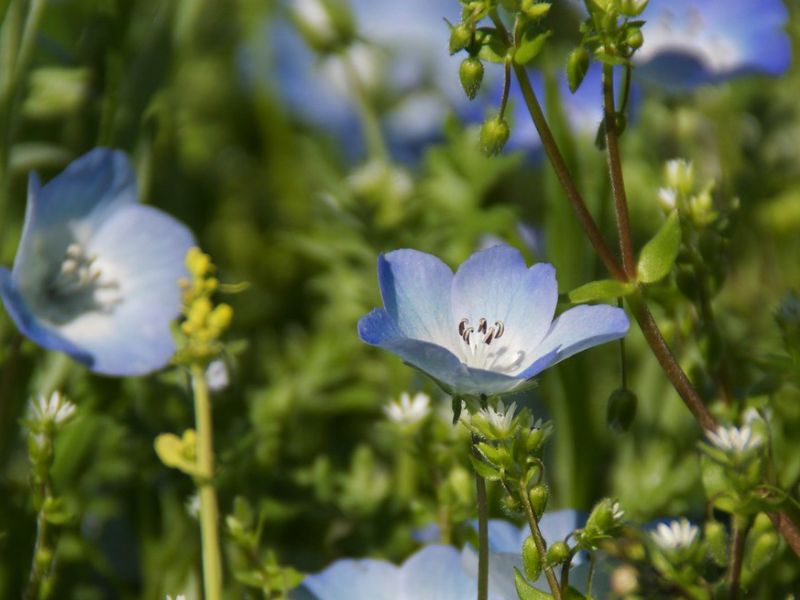
Combine baby blue eyes with cool-weather flowering annuals such as pansies , Johnny jump ups, stock, calendula, dianthus, or sweet alyssum. It is especially striking when paired with yellow or orange flowers. These choices will provide color for weeks in winter and/or early spring.
Baby blue eyes is also suitable for window boxes and patio side containers as well as hanging baskets. Plant baby blue eyes near the container’s edge to let its branches ramble over the edge.
After baby blue eyes dies back, fill the space with summer-blooming annuals or perennials to fill the space and take over the color show.
Find Where to Buy the Best Baby Blue-eyes (Nemophila menziesii)
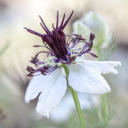


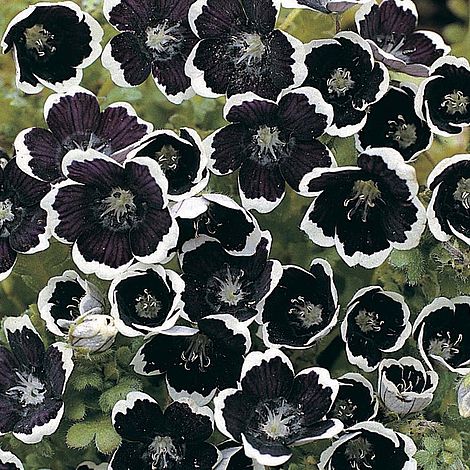
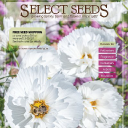
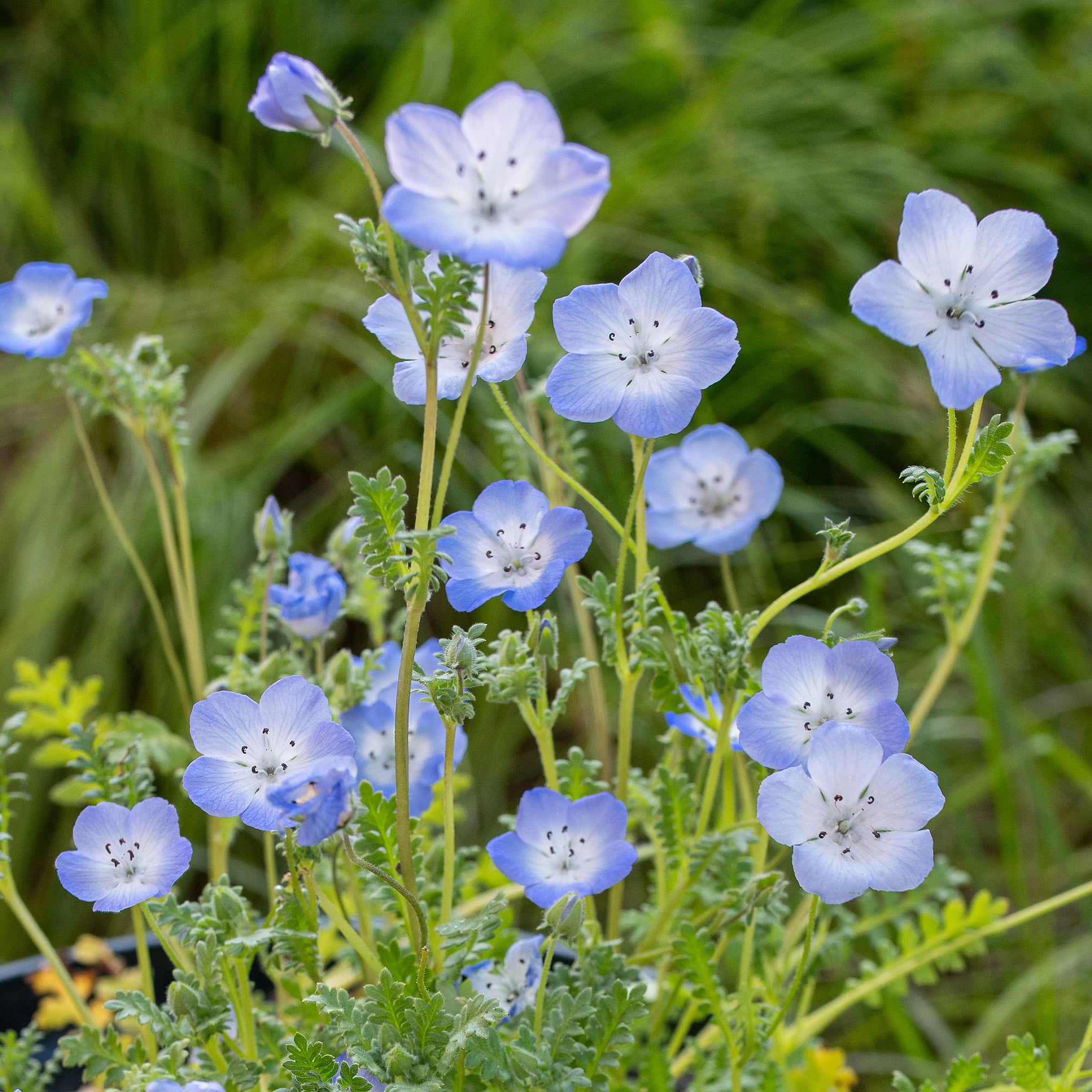

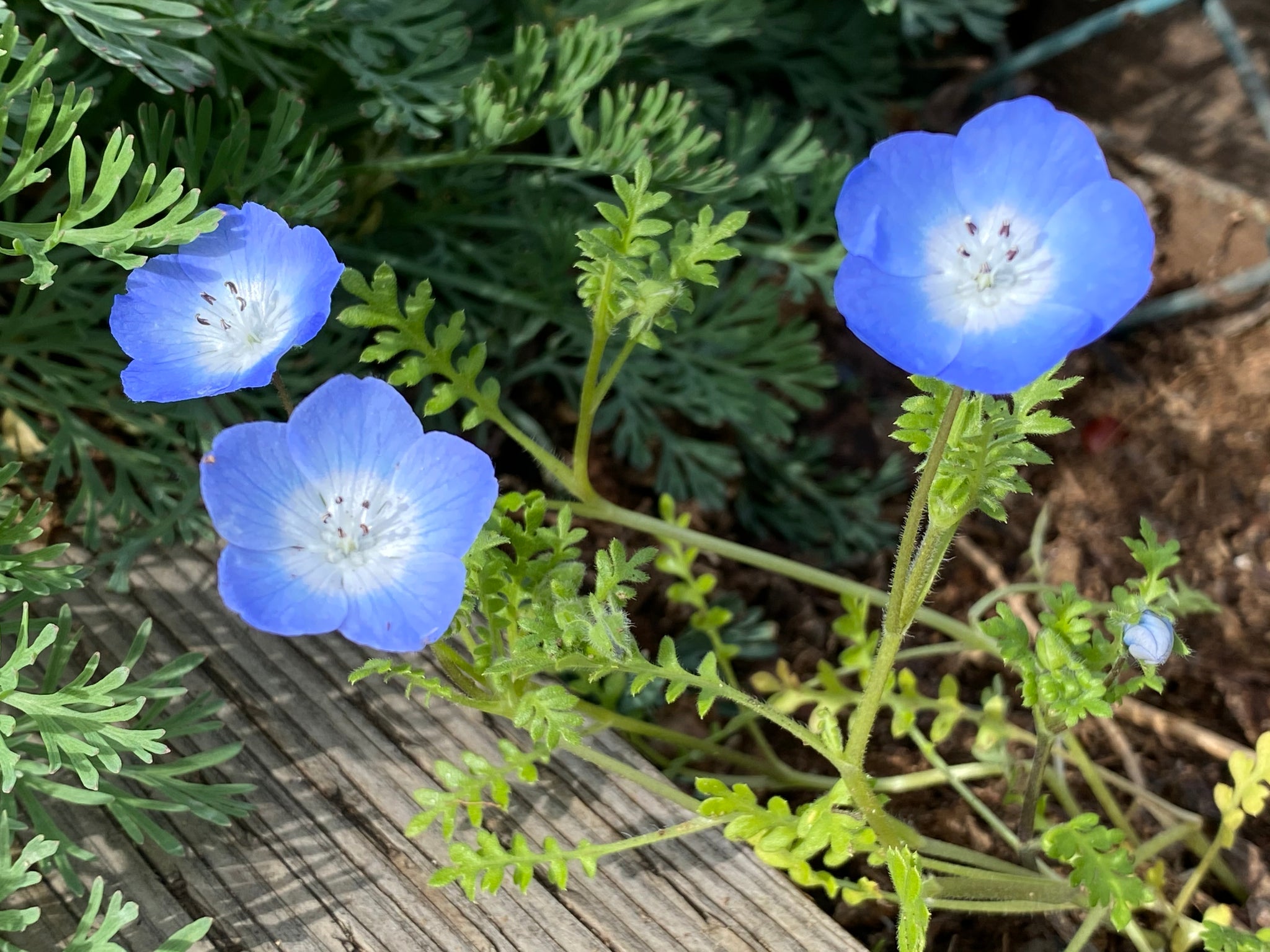
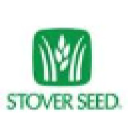









Leave a Reply